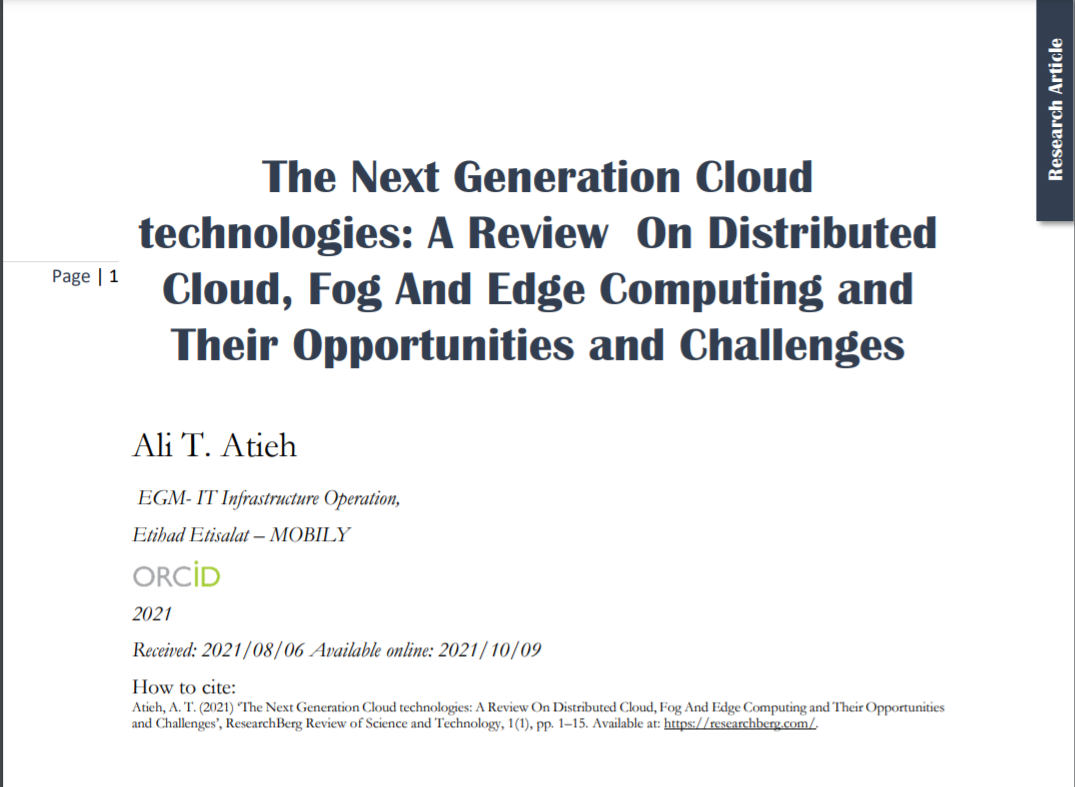The Next Generation Cloud technologies: A Review On Distributed Cloud, Fog And Edge Computing and Their Opportunities and Challenges
Abstract
Cloud computing is a 21st-century wonder with applications in nearly every industry imaginable. As a new technology, it has certain shortcomings. There are always attempts for improvements to combat those shortcomings. The next generation cloud technologies is believed to overcome these shortcomings. This research seeks to examine the few next generation cloud technologies, namely, distributed cloud, fog computing, edge computing. The distributed cloud improves worldwide service communications while also allowing for more responsive communications in individual regions. The distributed approach is used by cloud providers to allow lower latency and greater efficiency for cloud services. We find that there are few opportunities in Distributed Cloud such as, Improved security, IoT implementations, Faster content delivery, and cost efficiency. However, it poses some challenges such as data exposure to hackers when transferred from public networks. Fog computing, according to the findings, reduces the amount of time it takes, lowers operational costs, increases the level of security. However, one of the most difficult aspects of fog computing is the substantial reliance on data transit. An edge computing system allows consumer data to be handled at the network's edge, as close to the source as feasible. Several opportunities of edge computing in various areas include Network optimization, Healthcare improvement, and Transportation. The popularity of some of the next generation cloud technologies has been strongly impacted by the growth of the internet of things and the unanticipated surge in data created by IoT-connected devices. It is possible to state that obstacles can be gradually overcome because the benefits of next generation cloud technologies enable solutions that meet a wide range of contemporary company requirements. The adoption of next generation cloud technologies might take some time as businesses consider the benefits and drawbacks, and the transition may be slow.





